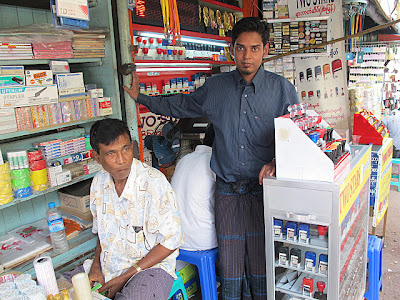Video #1, Shwedagon Pagoda, Yangon
Video #2, Shwedagon Pagoda, Yangon
Gyar Tawya Street and the Shwedagon Pagoda, Yangon
This monk practiced his English with me and also invited
me to take his photo, Shwedagon Pagoda, Yangon
Visitors, Shwedagon Pagoda, Yangon
Contemplative visitors, Shwedagon Pagoda, Yangon
A line of sweepers, Shwedagon Pagoda, Yangon
Worshipper in front of a Nat or spirit shrine, Shwedagon Pagoda, Yangon
Main pagoda, Shwedagon Pagoda, Yangon
Monk in meditation, Shwedagon Pagoda, Yangon
Shwedagon Pagoda, Yangon
Shwedagon Pagoda, Yangon
Shwedagon Pagoda, Yangon
Shwedagon Paya has survived numerous earthquakes but the worst came in 1768, when the top portion broke off. It's worst indignity however was perhaps in 1824-26 and 1852-29, when the British used it as a military compound.
My visit began in the middle of the afternoon and lasted for four or five hours. Time floated by here. Just like at the Suledagon, the mood was similar and ranged from reflective to festive, with crowds of worshippers walking clockwise around the base of the shining central structure. As the sun went down the effect was utterly magical. The central pagoda changed from a fiery gold to a more muted and floodlit presence.
Given that i normally wear orthotics, walking around the complex without my arch support, was uncomfortable. Perhaps being over weight, i felt the displacement right up to my hips. One had no choice however, as shoes must be removed at all Buddhist temples, in this part of the world. At the end of my visit, i followed a ramp to an elevator and descended to the entrance, but my footwear was nowhere to be found. The temple had four entrances and slowly it became apparent that i had left by the wrong exit. I retraced my way back up the pagoda, descended another way, and there were the shoes.
Shwedagon Pagoda - Wikipedia, the free encyclopedia

















































